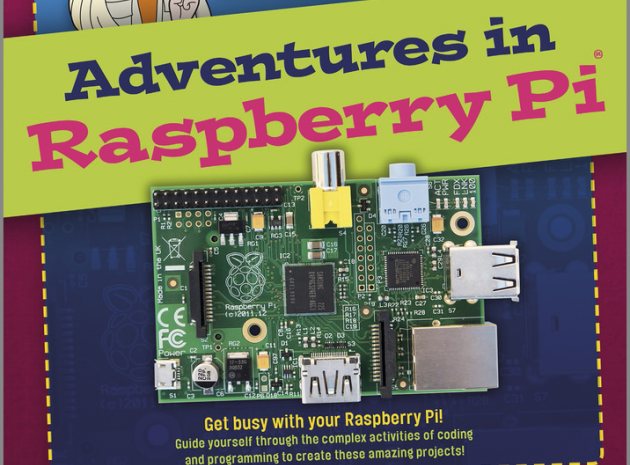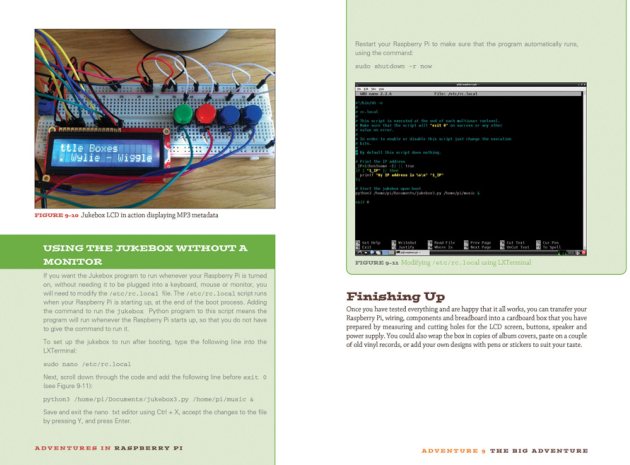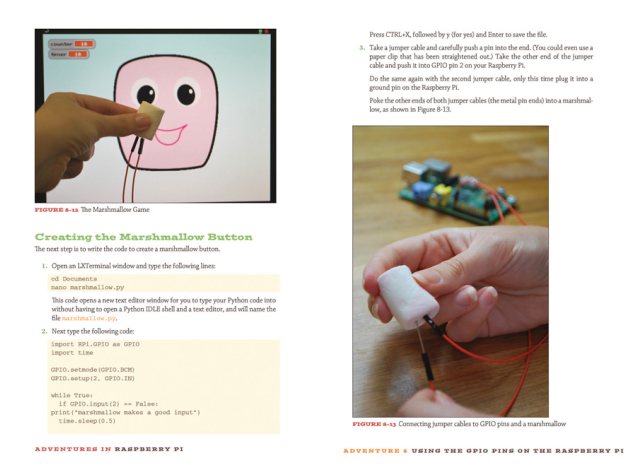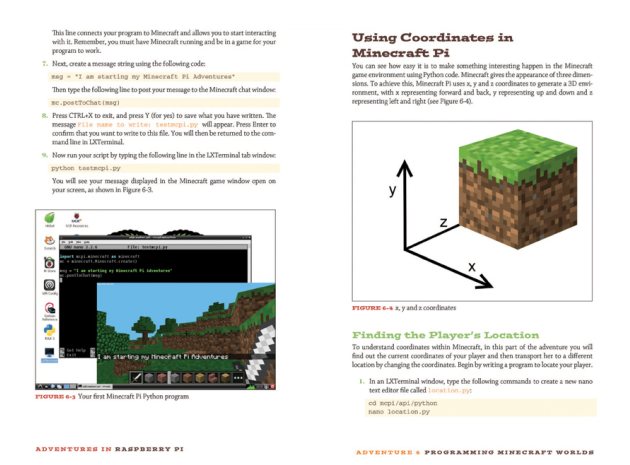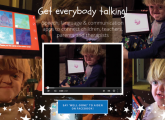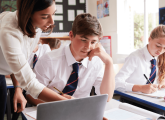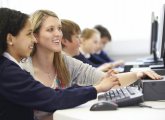Raspberry Pi is the cheapest computer on planet Earth. This uber-budget single-board mini-computer is mind-blowing (and really makes the punctuation dash work for its money). It is about the size of a credit card, weighs 45g and costs around £30, which is bonkers, but perfect for bulk-buying by schools. In short, this awesome micro PC is a nifty little beast and has been designed to fertilise the imaginations of young computer programmers and set their coding passions alight. Make no mistake though, this is not a plug and play device - it needs some serious sit down graft and attention; and for an off the shelf and auto-tune consumer generation this may be a challenge. Having a Raspberry Pi means you are fully committed because it demands you are actively involved, like a new parent changing nappies. Pupils will soon realise that programming is an art form that fights back.
Don’t worry though, because help is at hand. Adventures in Raspberry Pi is a brilliant, full-colour beginners’ guide to help curious teenagers new to Raspberry Pi, Linux, programming and electronics – presenting nine outstanding projects to get them started in an engaging and highly creative way. No previous computing knowledge is required as the book explains fundamental computing concepts and comes from an award winning computing evangelist, KS3 ICT Subject Leader and digital hero Carrie Ann Philbin. She is the inspiring teacher we want to clone and have in every computing department. Surely a human hologram of her must be in the pipeline.
This is a book aimed at novices and has been written from a back to basics point of view by an expert who knows her onions (and berries). Whilst there are plenty of other titles and tutorials out there for Raspberry Pi they all adopt a prior knowledge approach. This publication doesn’t, so it’s likely to inspire pupils, rather than turn them off.
The book is divided into nine chapters - or separate adventures - with the aim of helping pupils discover some of the marvellous things they can do with their Raspberry Pi and how to unleash its potential. For example, they will learn how to create art, music, programs, games and even a jukebox. With each new project the concepts get that bit harder and build on previous learning.
To begin with, pupils learn how to set up their Pi so it is ready to use; what hardware and software is needed and how everything is put together into a working system. In the next adventure they discover the power of text commands before moving onto some elementary programming skills by creating a crazy monkey animation and a role-playing adventure game using a graphical programming language and environment known as Scratch. Then things move up a gear, as they grasp how to program art using Turtle Graphics, with another programming code language called Python – the same language used by organisations like NASA, Google and CERN. Next it’s learning how to write a short program and use a text editor, delving further still to learn about modules and their applications, and pooling their new-found knowledge to create a text-based adventure game. From here pupils can let their imaginations run riot by using virtual building blocks programming Minecraft worlds.
Of course the fun doesn’t end here. Pupils learn how to transform their Raspberry Pis into electronic synthesisers and program music using Sonic Pi. The final two adventures get pupils creating circuits, controlling lights and even using marshmallows as input buttons to control computer games, before turning their Pi into a juke box with buttons to select and play tracks, and an LCD screen to display song names. To inspire learners further there is information on websites, clubs, projects and tutorials, videos, books and magazines.
What makes this book so awesome is that each project is supported by lively and informative video walkthroughs to reinforce the lessons. These are invaluable to teachers but they would also be perfect for some pupils, enabling them to get cracking and go through the lessons independently. There are definitions to hand, tips and tricks, important warnings and quick quizzes to test understanding. I like the style and organisation. It feels like the author is sat chatting with you and going through bits and pieces without losing patience. With each page the reader gets an ‘I can do this’ feeling. Of course there is technical language but things are very clearly explained and there are some nice graphics along the way to add a bit of fun. User-friendly it most certainly is. Oh yes, it’s gender neutral too.
This great resource will do a lot to promote the study of computer science and potentially inspire the next generation of computer programmers and pioneers of technology. It helps children shake hands with a cheap, accessible, programmable proto-computer and teaches them how to bring things to life through creative thinking. Raspberry Pi is a challenge. It’s supposed to be. As the saying goes, if at first you don’t succeed then you must be a programmer. I think this book will help fight that frustration but more importantly put the fun back into learning computing. It is intellectually engaging and lets young people tinker, explore, have fun and surprise themselves as intrepid adventurers. ICT with Miss P must be brilliant and this book deserves five stars, a high five and a slam dunk. As the author herself points out, never before has being a geek been so cool. It is said that programming is 10% science, 25% ingenuity and 65% getting the ingenuity to work with the science. This 256 page book is 100% fab: achievement unlocked!
Adventures in Raspberry Pi is available from all good bookshops, and online.


